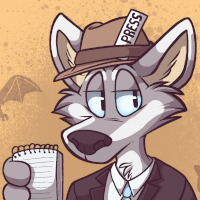The Painted Cat, by Austen Crowder – book review by Fred Patten.
by Patch O'Furr
Submitted by Fred Patten, Furry’s favorite historian and reviewer.
The Painted Cat, by Austen Crowder.
Dallas, TX, Argyll Productions, April 2015, trade paperback $19.95 (273 pages), e-book $9.95.
“I started painting myself up to look like a toon for two reasons. First, I was bored and needed a new hobby during my summer break as a teacher. Second – and far more important, in my opinion – was that my friend Valerie thought I’d look good as a cat, and I had always wondered what could have been if I had turned toon like she did. That she brought all the supplies, prosthetics, and paint we could possibly have needed sort of sealed the deal.” (p. 9)
The Painted Cat is more like Gary K. Wolf’s 1981 novel Who Censored Roger Rabbit?, or Disney’s 1988 Who Framed Roger Rabbit movie based upon it, than the average anthropomorphic novel. It omits the Disney crazy comedy, but in this world, the toons – and they are called toons — are live cartoon animals, not anthropomorphized “real” animals, who are socially lower-class living among humans; plus those humans who turn themselves into toons with special paint and prosthetics – see the deleted “pig head” sequence from the Roger Rabbit movie. Janet Perch, the protagonist, straps on a cat tail very like the artificial fox tails on sale at every furry convention, and within moments it attaches itself to her spine and she can move it like any cat can do with its tail.










